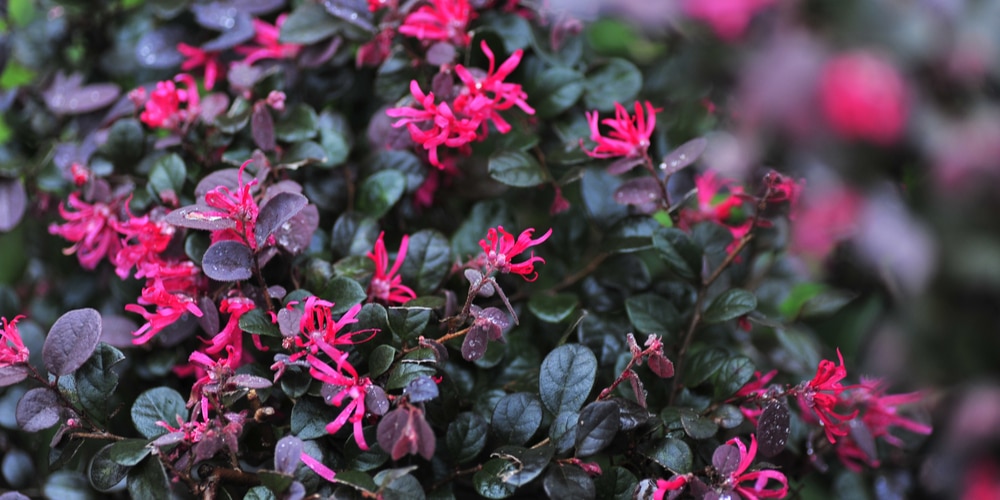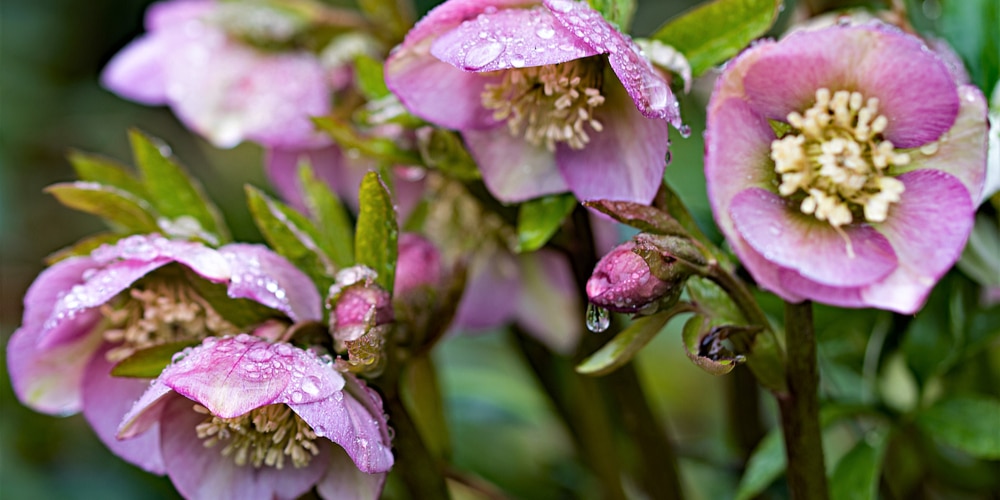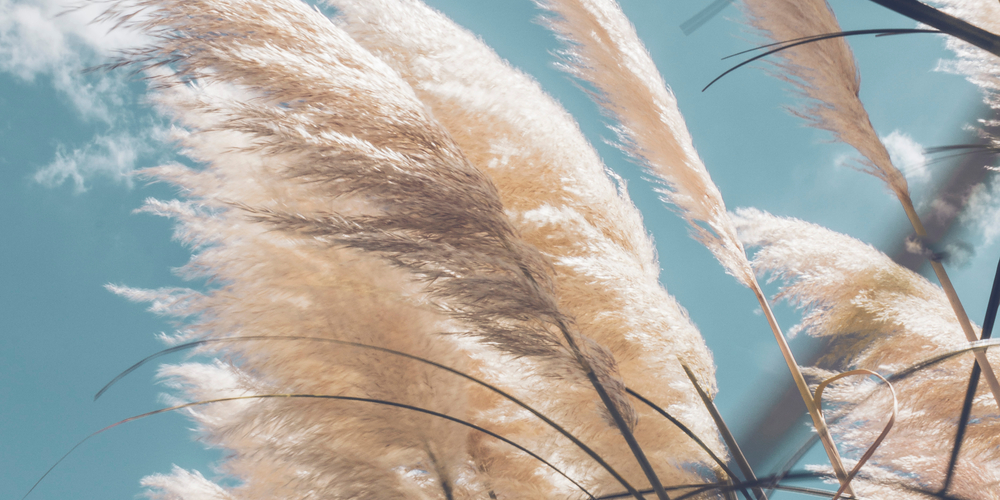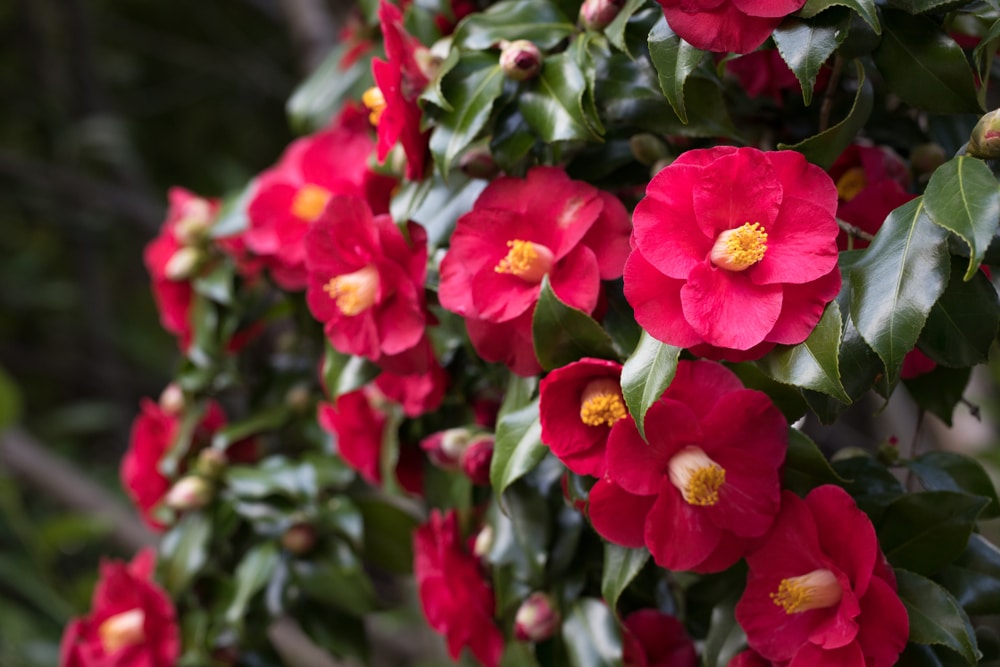When it comes to firepower nandina companion plants, you don’t necessarily need to think about plants that will work with them in a practical sense (because the firepower nandina is an evergreen shrub that’s about as hardy as they come). But what you do need to think about is aesthetics. A firepower nandina has a very powerful look, so when you’re planting them at home, you might find it hard to think of plants that are going to look great with them. But don’t worry, because it’s all right here in this post for you!
1. Loropetalum
Now, a lot of people will argue you shouldn’t put similar looking plants together because you risk it looking a little flat. But when it comes to companion plants for your firepower nandina, we say rip up that particular rule book.
Loropetalum is also an evergreen shrub, with very similar deep purple/maroon colors, which we think adds depth near to a firepower nandina, as opposed to making it all look a little ‘same-y’.
There is just one top tip we need to share, because generally the two will grow together well, but there are slight differences in their growing zone recommendations:
- Firepower nandina grows best in zones 6 to 11
- Loropetalum grows best in zones 7 to 10
If your growing zone in your local area matches up though, then the two are great together. They look amazing, and they’re both native to Asia, so can deal with heat in a way many others can’t.
If you’re looking for firepower nandina companion plants, then loropetalum needs to be near the top of that list!
2. Hellebore
Next up is hellebore. Now we know many people will raise their eyebrows at that because on the face of it, hellebore and firepower nandina don’t sound as though they’ll work. And we’ll admit that this pairing is restricted to growing zones 6 to 9, since hellebore prefers zones 3 to 9, and firepower nandina needs 6 to 11. But trust us, they work.
Hellebore prefers a little more shade to firepower nandina, but that just means you can get a little more creative with your planting. Both plants are native to Asia, although hellebore is also native to Europe, so just be careful about the variety you pick up. The European varieties will still grow great with firepower nandina, but the shade becomes a little more important here.
As for the aesthetics, well, it’s easy to find a hellebore plant that can either complement or contrast the firepower nandina’s deep purple colors, since you can pretty much find hellebore in any shade you can imagine.
That’s why hellebores are so high on this list, despite the limited growing zone crossover between the two plants, because hellebore is so varied in their colors, but they’re also very easy to add to a garden without worrying about too much maintenance.
3. Ornamental Grass
Yes, ornamental grass is a safe choice. It’ll add height and texture and something new to any garden and so it’s always a safe choice to throw on any lists like this.
But there is a reason we include it amongst the firepower nandina companion plants, and that’s because if there’s one thing the firepower nandina is missing from its long list of interesting points, its texture.
They have color down, they’re interesting during all 4 seasons, and they produce gorgeous flowers, but they don’t have much going for them in the way of texture.
That’s where the ever-interesting ornamental grass comes in! It’s an obvious pairing, perhaps, but one we’d recommend making time and time again!
4. Camellia
Camellia are evergreen bushes that flower from winter to early spring, and they add a lot of character to any garden, but it’s their bright colorings that often work best with firepower nandina.
Unlike loropetalum, which almost blends in with firepower nandina, camellia really takes its place in the spotlight. When planting, we’d recommend putting the camellia behind firepower nandina, or else your eyes might just get stuck looking at the beautiful leaves of this evergreen bush.
You will need to put camellia in a more shaded area too, so planting it behind the firepower nandina closer to shade is a good practical decision, as well as an aesthetic one. Not to mention the fact that camellia bushes will almost certainly grow far bigger than the firepower nandina too.
Both prefer grow zones 6 to 11, so they’re a perfect match here, and we really think the colors will impress you once you have them both planted at home.
Firepower nandina companion plants: Round-Up
There are, of course, other great firepower nandina companion plants, but these 4 are at the top of our list. Not only will they look great together, but in practical terms, they work wonderfully too. So all that’s left for you to do is some additional research to decide which of these amazing four plants will be the next addition to your garden alongside the firepower nandina!



